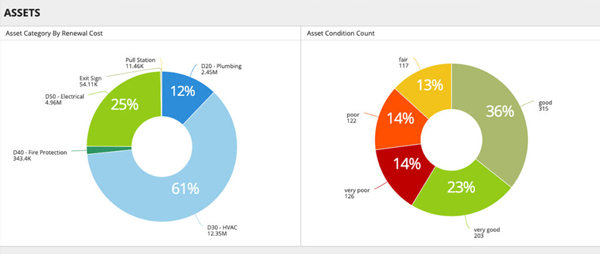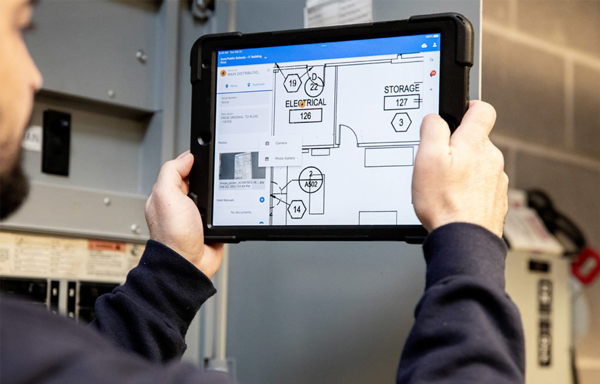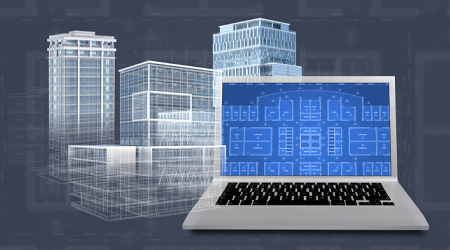SPONSORED
AkitaBox - Branded Feature
How to Create an Ongoing Facilities Data Collection Plan
by AkitaBox
Here’s a challenge: stop what you’re doing and find any data related to one of your boilers. Can you find the manufacturer model and serial number? Do you know exactly where the boiler is located? Can you reference the O&M manual? Can you see when it was last serviced and its current condition? Is the information you found all in one place?
When space and asset information is unorganized, paper based, and/or unaccounted for, it’s nearly impossible to know where your organization stands on safety, compliance, and costs.
Asset data collection and management is critical to planning for, maintaining, and optimizing your facilities. Your capital plan, maintenance schedule, and improvement initiatives are only as good as the data they’re built on.
So, we’ve established that facility data is powerful, but only if it’s timely, accurate, and accessible for the key stakeholders in your organization who need it. Let’s dig into why asset data collection is so important and best practices for collecting it.
Data is crucial for effective asset management and capital planning
Accurate, current asset data enables leaders to make better decisions about maintenance, repairs, replacements, and investments. Here are some other critical ways asset data impacts the entire organization:

- Regulatory compliance: Industry regulations require that asset data be tracked and reported. Failure to comply with these regulations result in fines, penalties, and legal liability.
- Risk management: Asset data helps asset managers identify potential risks, such as safety and environmental hazards or security vulnerabilities. Good asset data helps you take proactive measures to mitigate risks and prevent incidents.
- Financial management: Asset data is essential for tracking asset depreciation, valuations, and costs. This information is critical for budgeting, financial reporting, and asset lifecycle planning.
- Operational efficiency: Asset data helps asset managers optimize asset utilization, reduce downtime, and improve operational efficiency. And it can help identify opportunities to improve processes and automation.
Data helps your facilities team

Aside from the insight and decision-making power good asset data affords the broader organization, it really benefits your facilities management team at a granular scale.
- Improves efficiency: Comprehensive, location-based asset data in one place cuts down on time spent searching for equipment, O&M manuals, maintenance logs, and more which are many times located across multiple buildings.
- Expedites resolutions: Thorough asset data at your fingertips lets your team know what they’re walking into so they can grab the right tools and resolve issues more quickly.
- Strengthens communication: Consolidated, up-to-date asset data—ready for whomever needs it—provides clarity, saving hours of problem-solving and increasing productivity.
- Increases satisfaction: We all want to be valued and successful. Asset data provides facilities staff and vendors who keep our facilities running with the information they need to be fast and efficient.
Planning and executing asset data collection
If facilities data is so important, the more you have, the better, right? Actually, having too much or the wrong kind of data can take extra time to collect – time better spent on other things – and distract from the data that is important. That’s why it’s essential to define your organization’s data needs and create a collection plan.
Let’s walk through the four phases of data collection that will set the stage for short- and long-term success in recording your facilities’ lifecycle.
I. Planning Phase
Before you send out the troops, have a clear plan on what they will gather and why the data they need to collect will be used/is important. This lays the foundation to clarify the following:
- Determine what data needs to be collected for each asset
- Establish a consistent naming convention for assets
- Define a hierarchy for assets, if necessary
- Determine how often data will be collected for each asset
- Establish roles and responsibilities for collecting data
II. Data Collection Phase
To ensure the final deliverables are what you intend, it’s important to set parameters and processes for collecting the data. Here are a few things to consider:
- Assign unique identifiers to each asset
- Create a standardized data collection form
- Train personnel on data collection procedures
- Conduct regular audits to ensure data quality
- Collect data using a variety of methods, such as manual data entry, bar code scanning, or automated sensors
- Utilize mobile devices for onsite data collection
III. Data Management Phase
Data is only as good as the ability to access, analyze, and use it for day-to-day facilities management and capital planning. Create a plan with the following for all stakeholders to benefit from your data collection best practices.
- Establish a centralized data repository
- Develop a system for data storage, retrieval, and sharing
- Implement data security measures
- Regularly backup data to prevent loss
- Conduct regular data analysis to identify trends and areas for improvement
- Integrate data with other facility management systems, such as maintenance management or energy management
IV. Continuous Improvement Phase
Don’t expect everything to be perfect at the onset. It’s important to evaluate the process and desired outcomes on a regular basis.
- Review data collection processes regularly
- Solicit feedback from personnel on data collection procedures
- Identify areas for improvement
- Implement changes to improve data collection processes
- Regularly evaluate the effectiveness of your data collection efforts and results
Getting started with onsite data collection
Once you’ve worked your way through the planning phase outlined above and determined which data is most important to have on hand, it’s time to get boots on the ground and collect it. This where having the right tool and the right approach can make all the difference.
Using software technology specially designed for facilities data collection makes the entire process faster and easier for everyone involved. And the benefits don’t stop there. With data gathering software, all of your facilities information is digitized and organized in one place - making it possible for you to view, sort, organize, and even update the data over time.
AkitaBox Capture is one such tool. It’s a simple, streamlined mobile app for collecting any data points on any assets. With just a few clicks, you can input data such as location, manufacturer info, warranty details, current condition, photos, videos, and more. Plus, it’s built into the AkitaBox facilities management platform. That means any data you collect using AkitaBox Capture can support all aspects of your FM, from work orders to capital planning.
Data collection can seem daunting at first, but the AkitaBox team is here to help. Learn more about AkitaBox Capture here.










